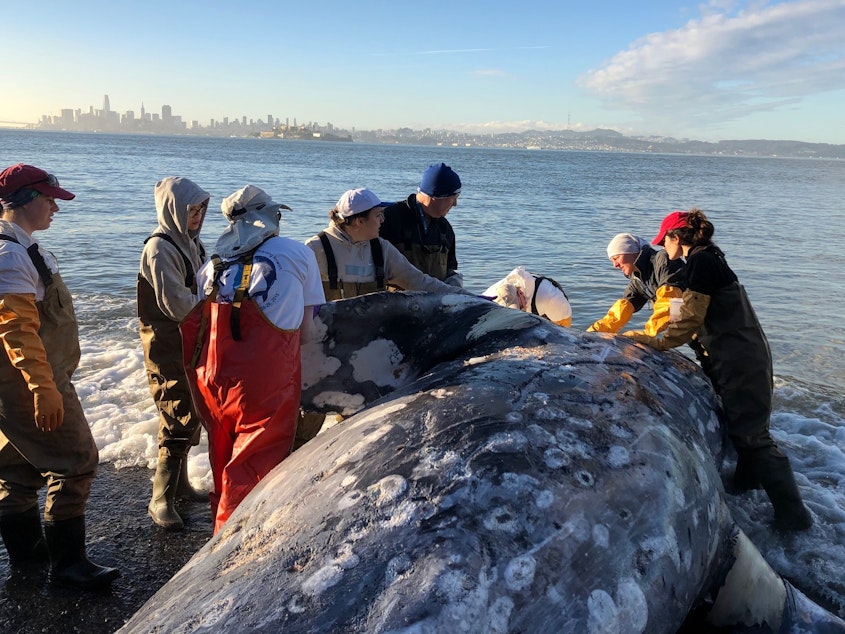Deaths of 75 West Coast gray whales declared 'unusual mortality event'

It’s a truly epic journey: Pregnant females head north first, then other adults follow.
Adolescents go next, with mothers and their calves bringing up the rear a month or two later.
In one of the longest known migrations of any mammal, gray whales commute 10,000 miles or more between the Bering Sea and Baja California.
But some years, including this year, something goes wrong, and hundreds of gray whales wind up dead, sunk to the bottom of the sea, with perhaps one in 10 of the carcasses eventually washing up on beaches.
Scientists have recorded 75 gray whales washing up dead on beaches from California to Alaska this year, with 25 of those in Washington state.
Thirty-seven have been found in California; with five each in Alaska and British Columbia and three in Oregon.
Some whales die every year, but this year’s die-off is about five times the usual rate and is the biggest since 2000, according to National Oceanographic and Atmospheric Administration.
The agency has declared it an “unusual mortality event” and launched research to determine its causes.
With many of the whales washing up skinny or emaciated, climate change in their Arctic feeding grounds is a prime suspect.
They bulk up on shrimp-like amphipods and other prey in the Bering and Chukchi Seas each summer before heading south to Mexico to breed.
A lack of sea ice could've left the gray whales without enough of the amphipods that fuel their travel to Mexico and back.
“Right now off the West Coast of the U.S. and Canada is really the primary time when they’re under peak nutritional stress,” NOAA whale researcher Dave Weller said. “They’re on their way back from Mexico back to the Arctic feeding grounds after not having fed for several months.”
“The Arctic is changing very, very quickly, and whales are going to have to adjust to that,” University of Washington oceanographer Sue Moore said.
One factor in gray whales’ favor: “Gray whales are good at eating a variety of things,” Moore said.
Researchers said it could take months, if not years, to unravel this underwater mystery.
The causes of nearly half the 67 “unusual mortality events” declared by NOAA for various species since 1991 remain undetermined.
Even judging whether a whale is emaciated can be difficult once a decomposing carcass has bloated and floated to the surface.
“So an animal can look very puffed out,” biologist John Calambokidis with Cascadia Research Collective in Olympia said. “Even their blubber layer can be reasonably thick in an adult animal, but it’ll turn out that blubber layer has almost no oil or lipid left in it, so it actually is an animal that is emaciated and has used up its stores.”
Whaling wiped out gray whales in the Atlantic Ocean, but in the Pacific, their populations have rebounded after commercial whaling was banned in 1937.
The revival of gray whales along the North American West Coast, with an estimated population of 27,000 in 2016, is widely considered a conservation success story.




